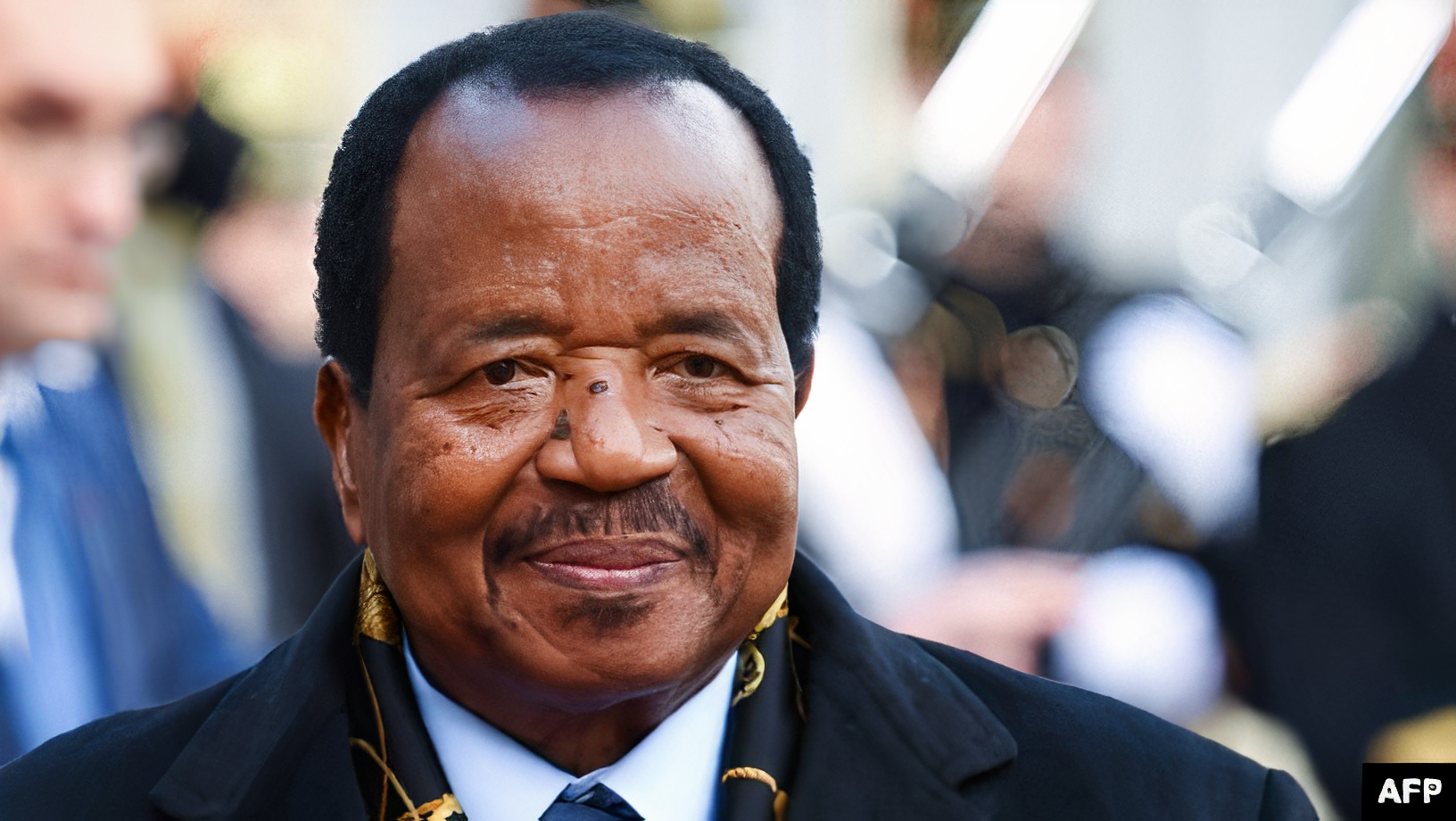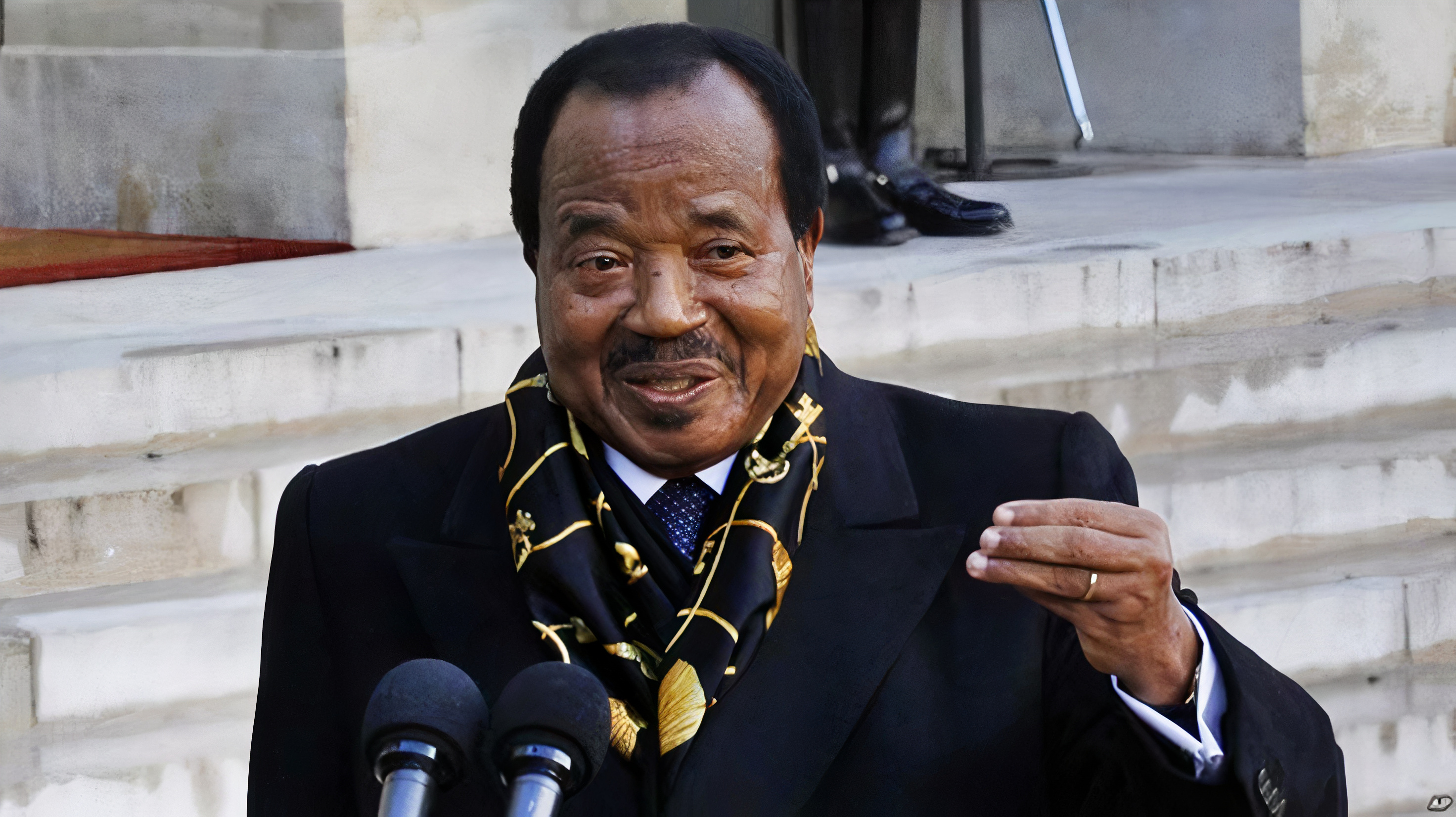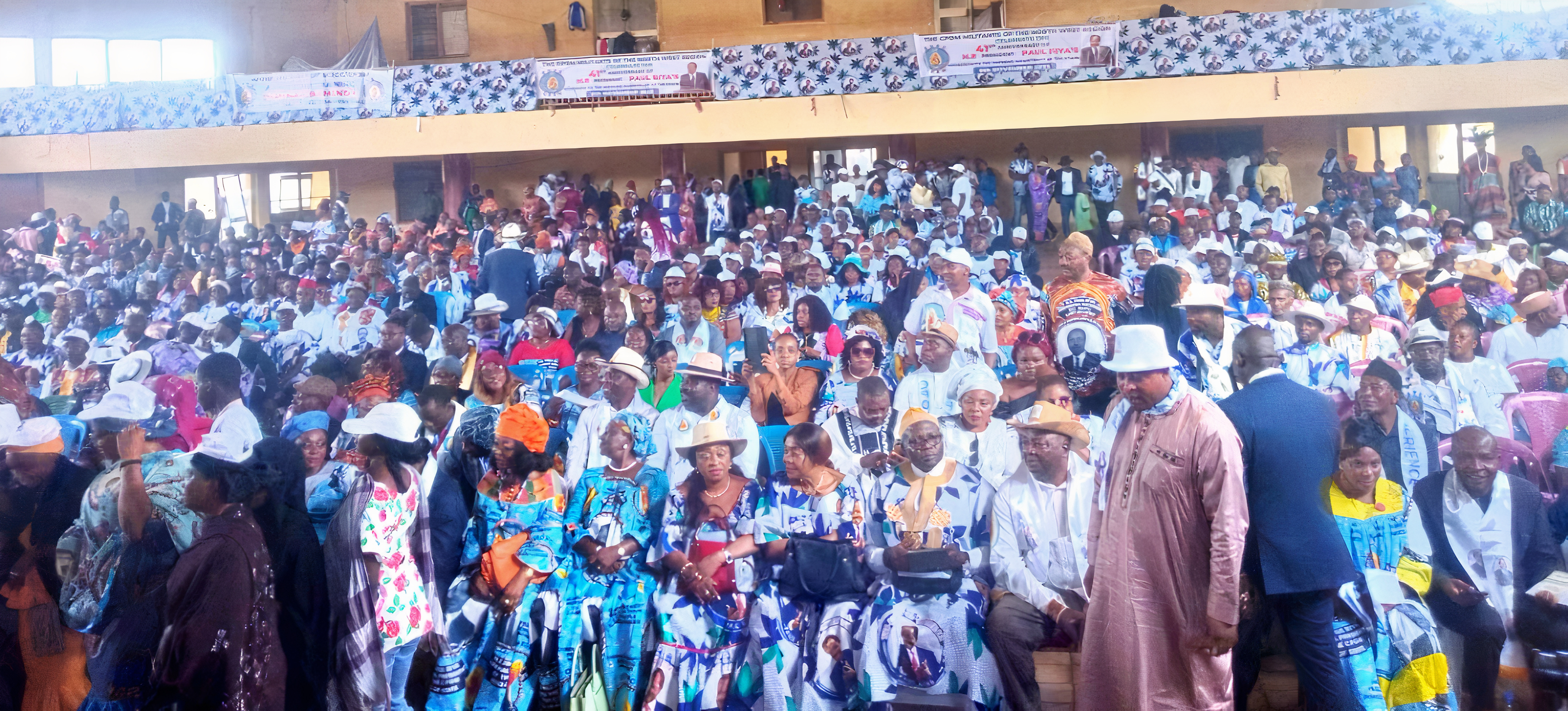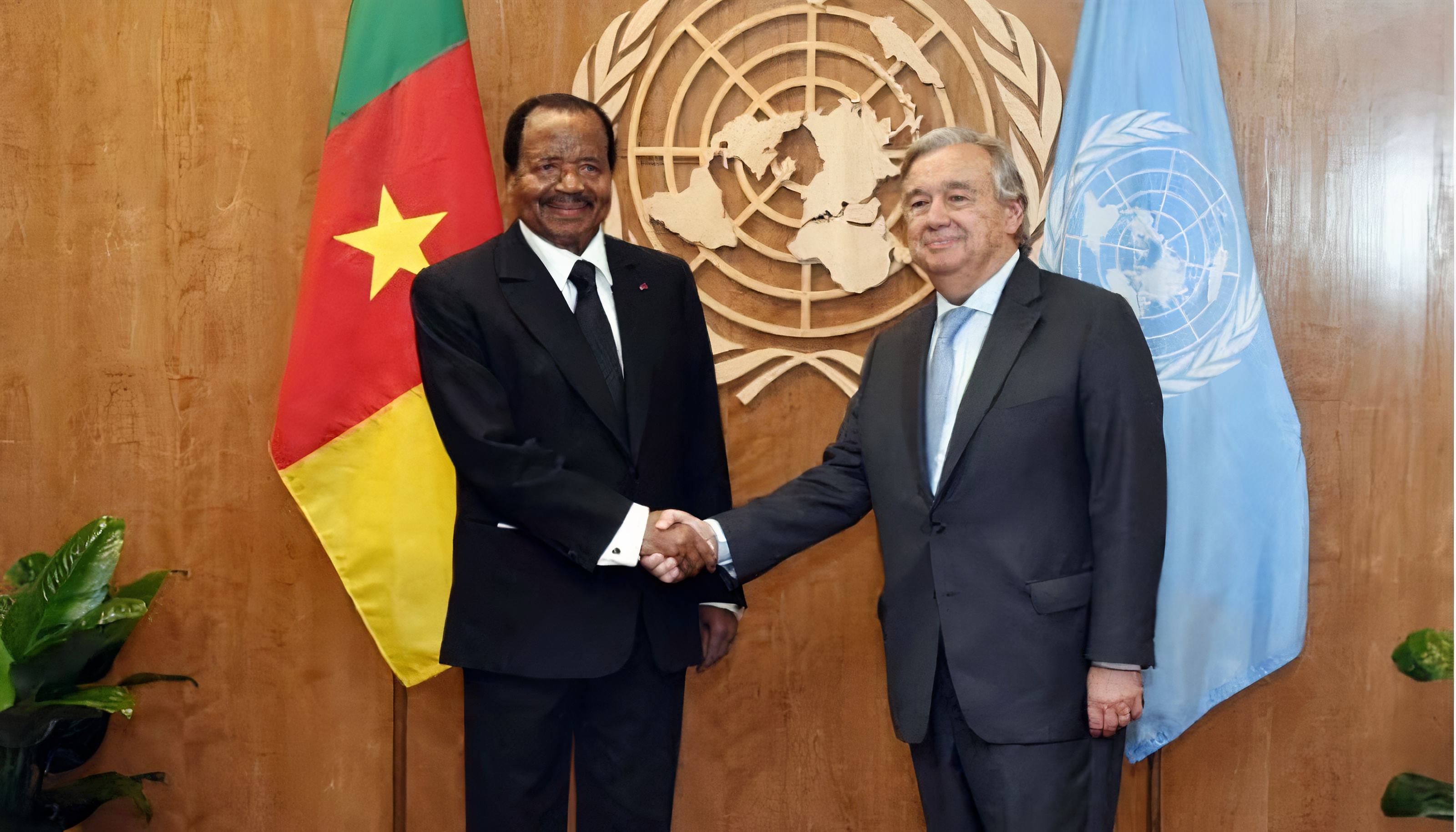
His Excellency
Paul Biya
President of the Republic of Cameroon • Visionary Statesman • Father of Democratic Governance • Builder of Modern Cameroon

From Humble Student to President of the Republic
Born February 13, 1933 in Mvomeka'a, South Region. His Excellency Paul Barthélemy Biya'a bi Mvondo rose from humble origins to become Cameroon's transformational leader.
Elite Education: Graduated from Institut des Hautes Études d'Outre-Mer, Paris with specialization in Public Law. Earned diplomas from Institut de Sciences Politiques (1961) and Higher Diploma in Public Law (1963).
Constitutional Succession: Rose through government ranks - Minister of State (1970), Prime Minister (1975), becoming constitutional successor under Law No.79/2. Assumed presidency November 6, 1982 following President Ahidjo's resignation.
"Much remains to be done. The best is yet to come. Rest assured that my determination to serve you is commensurate with the serious challenges facing us."
— H.E. Paul Biya, July 2025 Presidential Campaign Declaration
The Democratic Revolution
From 1 authorized party in 1985 to 375 by 2025: President Biya's unprecedented democratic transformation made Cameroon Africa's model of peaceful political pluralism and institutional stability.
December 19, 1990
President Biya enacted the law on associations and political parties, ending 24 years of one-party rule and restoring multiparty democracy to Cameroon.
October 11, 1992
First presidential election by direct universal suffrage with multiple candidates. President Biya won, establishing democratic legitimacy through competitive elections.
January 18, 1996
Constitutional amendment institutionalizing separation of powers, individual rights protection, and democratic governance structures ensuring rule of law.
Consolidating a Decentralized, Multi-ethnic & Secure State
"All men are equal in rights and duties... The State ensures the protection of minorities and preserves the rights of indigenous populations in accordance with the law." - Constitution of Cameroon, revised 1996 & 2008
Regional Inclusivity in Governance
Regions with CPDM governance (UNDP leads only Adamaoua)
High-level state and administrative functions across ALL regions and ethnic groups
Near-equal gender distribution among 360 mayoral positions (Mayors, 1st & 2nd Deputy Mayors)
Paul Biya: Architect of Anti-corruption Institutions
National Financial Investigation Agency
Anti-Corruption Commission
Special Criminal Court
Financial Oversight

Birth of the CPDM
March 24, 1985, Bamenda: President Biya transformed the Cameroon National Union into the Cameroon People's Democratic Movement, revolutionizing political engagement and participation.
Democratic Vision: "The name Cameroon People's Democratic Movement was not a mistake. It refers to an assembly of all citizens of good will who hold the unity and stability of our country in high esteem."
Electoral Dominance: CPDM has consistently won absolute majorities in March 1997, June 2002, July 2007, and September 2013 legislative elections, demonstrating sustained popular support.
"Violence causes misery to peoples. We do not want this in Cameroon. Our objective remains the establishment of a peaceful, democratic, just and prosperous society."— President Paul Biya, Facebook Statement

Economic Leadership & Infrastructure Transformation
President Paul Biya: Master of infrastructure development, energy security, and job creation programs - transforming Cameroon into the region's economic powerhouse.
Energy Independence Achieved
Road Infrastructure 2024
Connecting all 10 regions with modern infrastructure
Employment & SME Programs
International Economic Diplomacy

Presidential Platform 2025
Continuing the journey toward emergence - completing Vision 2035 for a prosperous, democratic, and united Cameroon.
Democratic Consolidation
Strengthen democratic institutions, enhance electoral processes, and deepen citizen participation in governance.
Vision 2035 Completion
Accelerate economic emergence through industrialization, infrastructure development, and job creation programs.
Unity in Diversity
Promote national integration, address regional concerns, and strengthen social cohesion across all communities.
Regional Leadership
Enhance Cameroon's role as a stable democracy and economic hub in Central Africa and beyond.
Global Diplomatic Leadership & Territorial Defense
Territorial Integrity Preserved: Master strategist who achieved peaceful resolution of Cameroon-Nigeria conflict over Bakassi Peninsula, while successfully countering Boko Haram threats and managing the Anglophone crisis.
Diplomatic Excellence: Expanded Cameroon's diplomatic presence from 7 missions (1960) to 23+ (1982), with current 47+ global representations making Cameroon a respected voice in Africa and Europe.
UN Leadership: Regular participation in UN General Assembly sessions (50th, 51st, 55th, 56th, 60th, 61st, 63rd, 64th, 65th, 71st, 72nd) demonstrating Cameroon's committed multilateral engagement.

Four Decades of Presidential Leadership
Key milestones in transforming Cameroon from one-party state to vibrant democracy and emerging economy.
Assumes Presidency
Constitutional succession as Prime Minister following President Ahidjo's resignation. Sworn in at National Assembly before elected representatives.
Restores Multiparty Democracy
Enacted law on associations and political parties, ending one-party rule since 1966. Over 200 political parties subsequently registered.
First Multi-Candidate Election
First presidential election by direct universal suffrage with multiple candidates. Democratic legitimacy established through competitive process.
Seeking Eighth Term
At 92, declaring candidacy: "Much remains to be done. The best is yet to come" - committed to completing Vision 2035.

Experience That Delivers
Democracy • Stability • Progress
43 years of proven leadership. 7 democratic elections. Vision 2035 in progress. Vote H.E. Paul Biya on October 12, 2025.